by Julia M Brennan
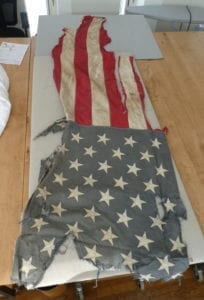
The ripped edges, holes, and stains tell the story of where this flag was, and like the populations of New Orleans, the condition is the story of this enormous human disaster.
The flag was flying during Hurricane Katrina, battered, wind-torn, soiled with mud and rain…..this is how it came to the conservation studio.
Like many personal objects from scenes of tragedy, the context, and its used appearance is central to understanding and verifying historical details. In conservation, the central philosophy is to slow down the rate of deterioration – done with methods such as cleaning, the removal of harmful substances, and repair. Most clients want their heirlooms to look aesthetically pleasing, with stains removed or minimized and tears delicately stabilized. This is what the majority of textile conservation treatments entail.
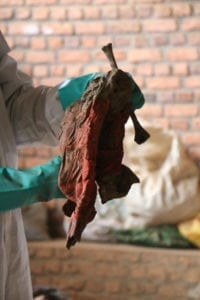
When cleaning, the extracted dirt and other hallowed material is kept as part of the ‘genocide proof’ collection.
But with selected artifacts of ‘human archeology’, retaining the authenticity is important. For example: leaving a bullet hole in a Civil War flag, or the burn marks on a September 11 fireman’s jacket, or certain graffiti, and not removing the dirt and human information from items of personal clothing from sites of mass atrocity. Here, conservation is a delicate balance between accessibility and preservation, the wishes of the owner (a possible survivor of the tragedy), and a director of a museum responsible for the long term care of this piece of history……
In recent projects to document and preserve the remaining clothing of victims of the 1970’s Khmer Rouge genocide in Cambodia, conducted at Tuol Sleng Prison Museum, the protocol is guided by survivors and scholars, and the objects are kept ‘as is’, with a minimal amount of intervention. This includes surface cleaning, which enables clearer identification, the ability to see the form, pattern, and details, and provide more information for further study.
These projects are part of a larger political, cultural and historical discussion. The artifacts provide evidence, truth, and moreover allow people to reflect, and remember, and honor those who died. When working with these precious materials, there is no preservation ‘roadmap’, except respect. They call for a cautious approach, which considers long-term care, and the integrity or authenticity of the object.
From piles of soiled fragments at Tuol Sleng Genocide Museum, intimate pieces of clothing such as an older woman’s camisole, earring, shorts with multiple handstitched repairs, and caps with embroidered names of owners, are revealed through a careful process of surface vacuuming and soft brushing.
In Rwanda at the mass atrocity site of Nyamata Church, the clothing is carefully sorted into categories of condition; from completely degraded and unrecognizable, to full and partial pieces that can be further preserved. A delicate ‘tumbling’ process, designed specifically for these materials, renders the clothing cleaner, with color and recognizable.
Here, we begin the sorting process with the articles covered in dirt and debris…
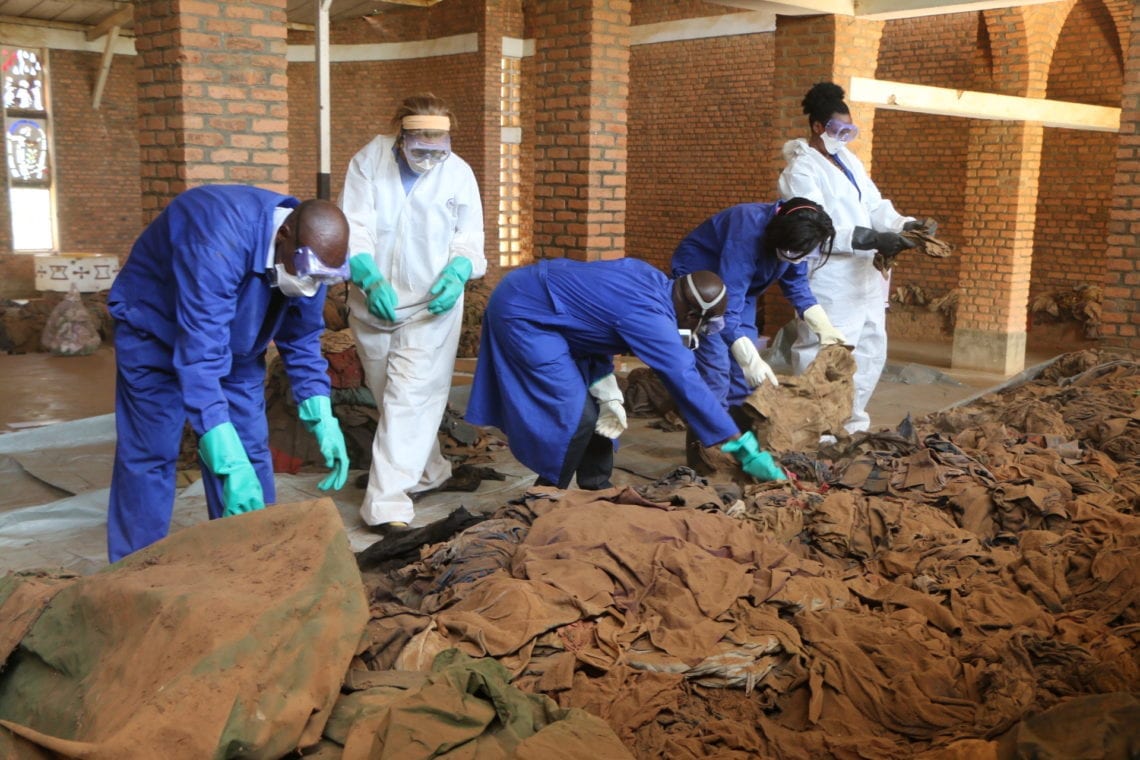
…and below, form, pattern, details and color emerge after the delicate ‘tumbling’ process…
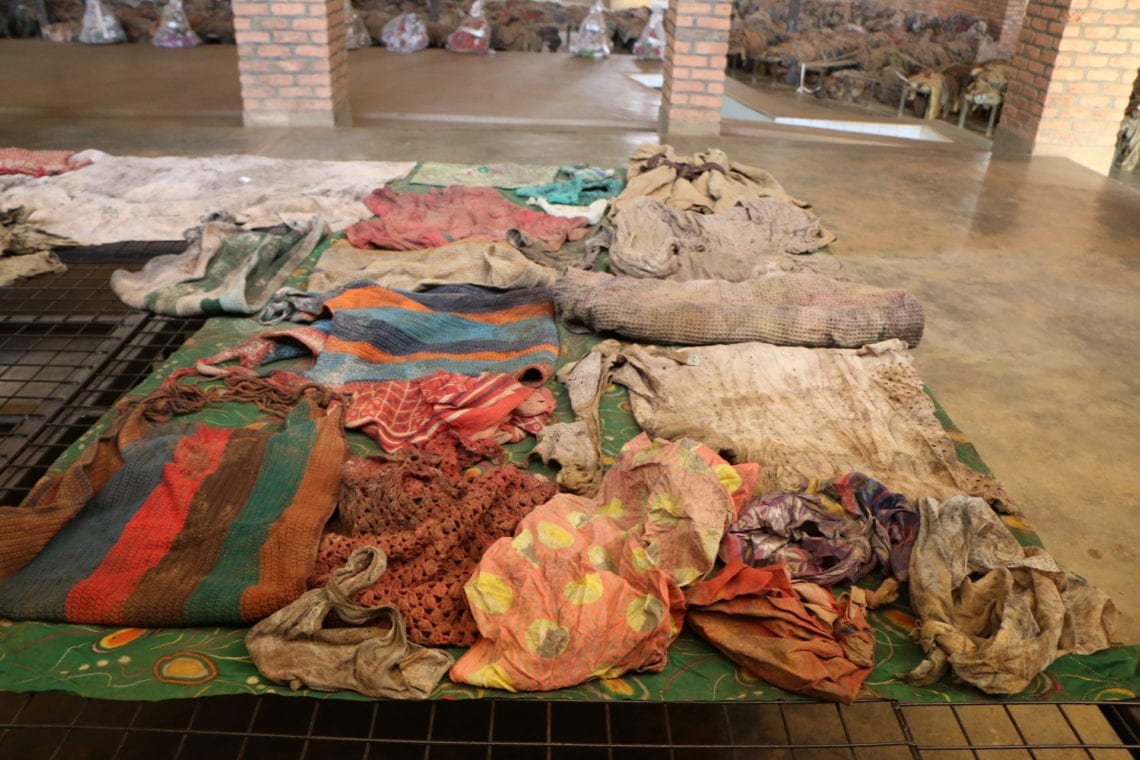
Members of the Tuol Sleng conservation team examine pieces of clothing, creating a detailed database, photographic records, before putting them into microclimate storage.
Here they are carefully surface cleaning with soft brushes and vacuum.
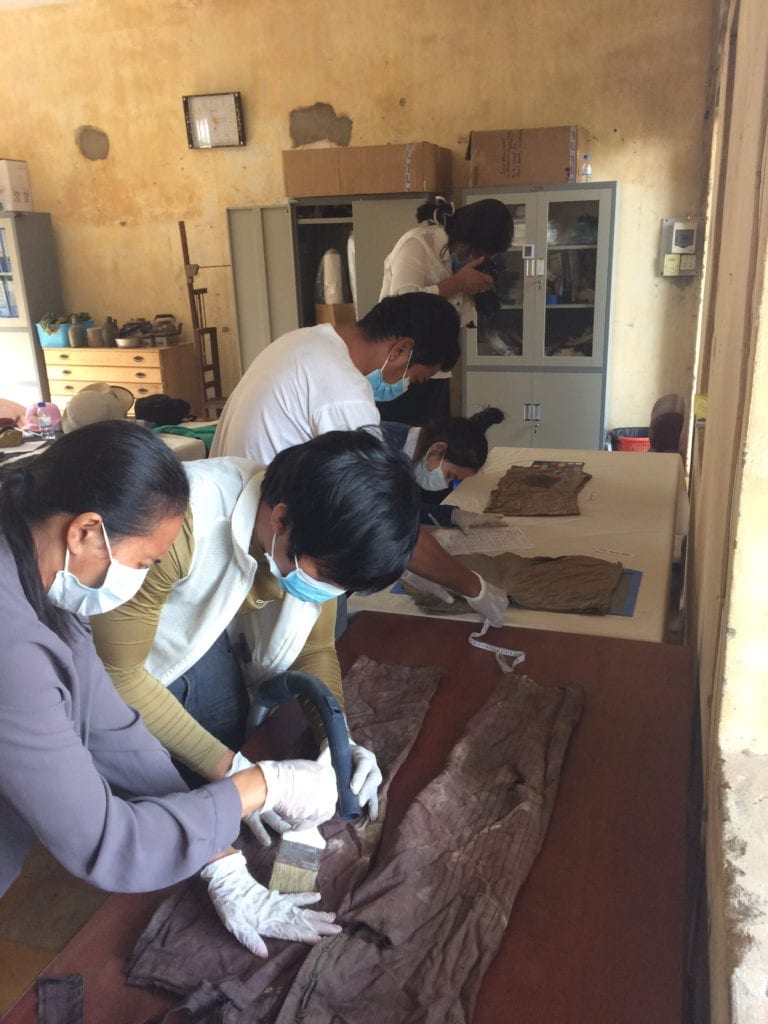
—All Rwanda photos by Meagan Jeffs Rossouw—

Leave a Reply